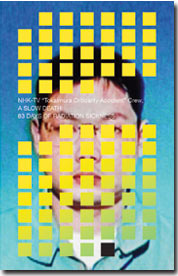Best of 2008—The Japan Times. “A brave account of corporate greed and scientific expertise.”
A Slow Death:
83 Days of Radiation Sickness
By NHK-TV “Tokaimura Criticality Accident” Crew
Non-Fiction / Medicine
Hardcover, 160 pages, B&W and Color Photos, 5.5 x 8.5 inches
978-1-934287-40-8
U.S.$19.95 / CAN$22.95
Rarely is a nonfiction book as unforgiving in its honesty as A Slow Death: 83 Days of Radiation Sickness. With detailed descriptions, accompanied by vivid photographs, this work by an award-winning investigative team unflinchingly presents the effects of radiation sickness, a subject rarely discussed never mind confronted in such arresting detail.
On September 30, 1999, the worst radiation accident in Japan’s history struck a uranium processing facility in Tokaimura, northeast of Tokyo. Three workers were exposed to extreme levels of neutron beams as a result.
Japan’s public broadcaster, NHK (Nippon Hoso Kyokai, or Japan Broadcasting Corporation), documented the step-by-step deterioration and intense medical treatment of one of those workers. The resulting original television documentary aired in May 2001 and subsequently won the Gold Nymph Award, the highest award possible, at the 42nd Monte Carlo Television Festival in 2002. This book is the print counterpart of that celebrated feature and includes an afterword that updates the narrative.
Given the renewed interest in alternative energy resources, A Slow Death: 83 Days of Radiation Sickness is a timely and sobering reminder of the dangers of nuclear power and man’s relative ignorance in harnessing the power of the atom. It also raises provocative questions about the medical ethics of life-prolonging treatment and the value of human life itself in a world replete with advanced technology.
“As some alleged environmentalists (including figureheads such as Al Gore) have begun touting the benefits of ‘non-carbon sources’ of energy—an evasive way of saying ‘atomic power’—Hisashi Ouchi’s death comes across as an extreme cautionary tale.”
—San Francisco Bay Guardian
“Stylistically resembling a fictional narrative, this grim chronicle of Ouchi’s deterioration demonstrates the humanity and psychology of the medical profession in extreme situations. In that sense, it’s an interesting companion to [Osamu Tezuka’s] Black Jack manga. Think of it as such a nightmarish episode of House that as a result of watching it you resolve never to tune into the series again.”
—Firefox News
“Easily the most gruesome chronicle of radiation poisoning ever reported. It is a day-by-day, blood-count by blood-count, skin-peeling close-up.”
—Rover Arts
“Harnessing the atom’s energy can help, even save, mankind or lead to its destruction. This is the sad, cautionary tale of things gone awry, a noble effort by Japanese physicians to save Mr. Ouchi’s life and of our limited ability to deal with the consequences of mistakes in this arena.”
—Robert Peter Gale, M.D., Ph.D., D.Sc., F.A.C.P. (Hon),
UCLA Medical Center
“Radiation injuries are potentially complex, often involving a combination of different types of radiation energy. The Tokaimura accident reminds us of these complexities as well as the importance of accurate information flow from the site of the incident to the healthcare provider in the hospital. New knowledge was gained regarding optimal management of acute radiation toxicity.”
—Nicholas Dainiak, M.D., F.A.C.P.
Yale University School of Medicine
Chairman of Medicine, Bridgeport Hospital

